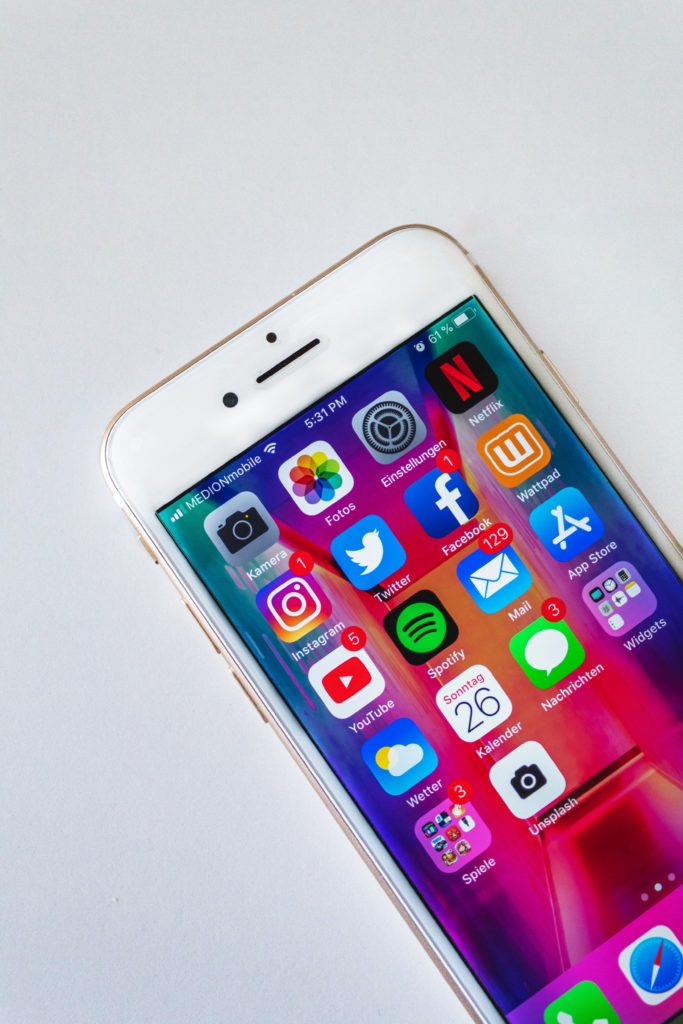Q&A With Ben Tuff: Understanding CRM in the Company-Wide Framework

Here’s an irony for you: CRM is all about connecting the dots between your customers, their behaviours, their buying habits both online and offline, and developing a deep understanding of how they relate to your company, yet, businesses often fail to understand how CRM relates to other departments within their own company.
CRM’s true advantages come to form when every department buys into the value of knowing your customer’s behaviour — and subsequently creating a more meaningful brand experience — at every step of the journey. Who could say no to that?
In this Q&A, our Managing Partner, Ben Tuff, uncovers many of the Frequently Asked Questions about CRM from the company-wide lens. Marketers, use some of these thoughts next time you’re fielding questions at the Director’s meeting.
BDG Takeaways:
- CRM has the power to influence consumer behaviours at every level, and your exec needs to know that!
- CRM’s communications will — and should — benefit all departments
- Don’t force email down the throats of certain demographics. Focus your marketing efforts on the channels with the most impact
- It’s not always easy to find the “perfect” CRM marketer who has an eye for design, technical aptitude, customer service experience, and general marketing knowledge. You’ll need to hire a few people to get the job done, which may see your departmental costs go up
- Cross-departmental collaboration is vital to create seamless brand experiences
Q1: What’s the most common misconception about CRM from the C-Suite?
A1: There are a few common themes that marketers and CRM specialists come across on their day-to-day. First and foremost, there’s the old-school thinking that email is a channel where you can blast out 500,000 emails every time sales are low to see an immediate increase in business. But CRM isn’t just a last-click attribution channel: It’s a mechanism for businesses to build long-term engagement with their customers.
With that in mind, “blasting” emails will not only interrupt the flow of content to the customers depending on their place in the lifecycle, but it could damage a brand’s reputation. Customers are incredibly savvy now, and they expect communications to be highly targeted and personalized. The other side of the coin thinks that Email is a “dead” channel, which is a shortsighted way to view CRM’s purpose in its entirety: It’s not just about “sending emails.”
Other common misconceptions include buying targeted lists for growing your database, and the idea that Lifecycle Management is too complex for a marketing team to implement. First and foremost, buying targeted lists has proven to be more harmful than healthy. As for the “complicated” aspect, keep in mind that no matter the size of your business, there is a tool that fits your expertise and your needs. Platforms have become so sophisticated that they’ll do the heavy lifting for you — and typically come with knowledgeable onboarding teams that will show you and your team the ins and outs.
Q2: What makes CRM such an effective strategy within a company?
 A2: CRM is an incredibly useful channel for its ability to influence behaviour. Digital marketers love the idea of seeing results in real-time… just about as much as multi-channel attribution. With CRM, you’re able to see every step of the journey: A shopper clicks on a pair of jeans and adds it to the shopping cart, then something comes up and the shopper decides to close their window. The fact that you can send out a communication immediately after to say, “Hey [First Name]! You left your jeans over here! Do you want them? By the way — we have free shipping today!” is very powerful.
A2: CRM is an incredibly useful channel for its ability to influence behaviour. Digital marketers love the idea of seeing results in real-time… just about as much as multi-channel attribution. With CRM, you’re able to see every step of the journey: A shopper clicks on a pair of jeans and adds it to the shopping cart, then something comes up and the shopper decides to close their window. The fact that you can send out a communication immediately after to say, “Hey [First Name]! You left your jeans over here! Do you want them? By the way — we have free shipping today!” is very powerful.
Essentially, email is a channel that allows you to directly and immediately communicate with your clients in the digital space through automated, targeted content.
Q3: How Should CRM Marketers Leverage Other Departments?
A3: Cross-departmentally, CRM should help streamline communications between customers and the company. For example, in your communications strategy, you might send out a survey to assess someone’s satisfaction with your product or service. If the survey returns negative results, an escalation should be put in place, wherein a manager or customer service rep reaches out to see how they can improve the customer’s overall experience with the brand. At any point, you can trigger automated communications to your clients that speak to different motives within the business, then you’re deploying a CRM strategy that’s benefiting the whole company through efficiency. In short, CRM is far more than a “marketing channel” — it can generate authentic feedback, streamline communications, build relationships, and effectively drive sales.
Q4: Is Email for every demographic? How should companies prioritize their marketing channels?
 A4: About 60% of companies still do a monthly email blast disguised as a “newsletter”. The blast is what’s commonly called a “spray and pray” — where you send your email to your entire database, hoping that the email will yield some results. Typically these include little to no personalization or automation, nor relevant products or services specific to the client. But key buyer demographics — Millennials, Gen-Z’s — don’t typically engage with this type of communication channel. First, you’re lucky to get an email address in the first place — and they won’t think twice about unsubscribing to your newsletter blast if it doesn’t relate to them. They don’t want a company that doesn’t take the time to think about them to bombard them with messages. There’s a double-edged sword when it comes to consumer data, and it’s evident here: We now have access to a ton of information about our customers, but we are expected to leverage this to curate experiences. If you’re finding your target consumers simply aren’t engaging on emails, throttle down where it matters more: Spend your time and efforts with targeted ads on Instagram or Twitter card campaigns.
A4: About 60% of companies still do a monthly email blast disguised as a “newsletter”. The blast is what’s commonly called a “spray and pray” — where you send your email to your entire database, hoping that the email will yield some results. Typically these include little to no personalization or automation, nor relevant products or services specific to the client. But key buyer demographics — Millennials, Gen-Z’s — don’t typically engage with this type of communication channel. First, you’re lucky to get an email address in the first place — and they won’t think twice about unsubscribing to your newsletter blast if it doesn’t relate to them. They don’t want a company that doesn’t take the time to think about them to bombard them with messages. There’s a double-edged sword when it comes to consumer data, and it’s evident here: We now have access to a ton of information about our customers, but we are expected to leverage this to curate experiences. If you’re finding your target consumers simply aren’t engaging on emails, throttle down where it matters more: Spend your time and efforts with targeted ads on Instagram or Twitter card campaigns.
Q5: Do you think the rapidly evolving space of AI will factor into all of this? If so, how?
A5: Given the closeness of CRM and the fundamentals of AI, it’s safe to say that CRM platforms and technologies will rely heavily on AI. The basis of CRM is to send the right message to the right person at the right time, and machine learning and AI attempt to predict an outcome based on patterns and behaviours. For example, we would be able to reasonably predict that if a person is coming back from a trip to Barbados for the fifth time, there will likely be a sixth time. We also have data that tell us what style of home and how many bedrooms they’ve occupied, and in which exact location. But this doesn’t take into consideration new data or changes in behaviours that could influence the next stay, which is where machine learning will step in. Machine learning will make our data become more precise and more complex, and it will allow systems to process information at a more rapid pace.
Q6: It’s clear that CRM has evolved significantly in the past decade or so. How has this evolution altered internal expectations?
A6: The ideal CRM marketer has a great eye for design, customer service experience, strong data acumen and technical skills. These people are like unicorns; you’ll go through stacks and stacks of resumes and find that most people have a handful of the key traits, but rarely all.
As expectations for CRM marketers increase, so do frustrations from the top-level execs: Since it’s a challenge to hire the one person who can “do it all”, you hire a few people on the team, and how much you’re spending for the channel increases significantly, as your department goes from one person to four or five. As a result, the expectations need to change from an ROI perspective — ‘Am I going to increase my revenue on this channel by five times?’ –As the expectations for the CRM marketer increase, the pressure for the channel to generate revenue does as well. This is all happening in tandem with a greater demand to create more content and more communications that are personalized, targeted and extremely effective. In the quest for CRM to generate ROI, the key is to not forget the channel purpose: to help evolve the relationship with the customer. Of course, with that evolution, higher ROI comes hand-in-hand, thanks to the power of loyalty.
Q7: What benefit does the consumer have for cross-departmental collaboration within a company?
A7: Seamless experience is at the heart of every customer’s expectations today. The rapid adaptation of smartphones into our everyday lives has allowed businesses to communicate with customers on-the-go, with a push, ping, message or email. If a customer has to wait three seconds to load a page after you’ve taken up their precious time, they’re out. If they have to re-enter their email or open a separate browser to type in a tracking number, they’ll likely close the browser. If something doesn’t fit seamlessly to their screen, they’ll think something is “broken.” If no one answers the phone when they call — they’ll call somewhere else. In short, every department — from dev to design to customer service — relies on one another to cultivate a seamless brand experience. If there’s one interruption in flow, the whole ecosystem breaks, damaging the fragile brand-customer relationship.
Want to hear more of Ben’s thoughts on CRM within the company-wide framework? Reach out to us here.

